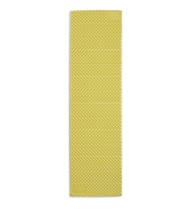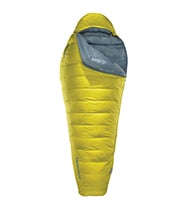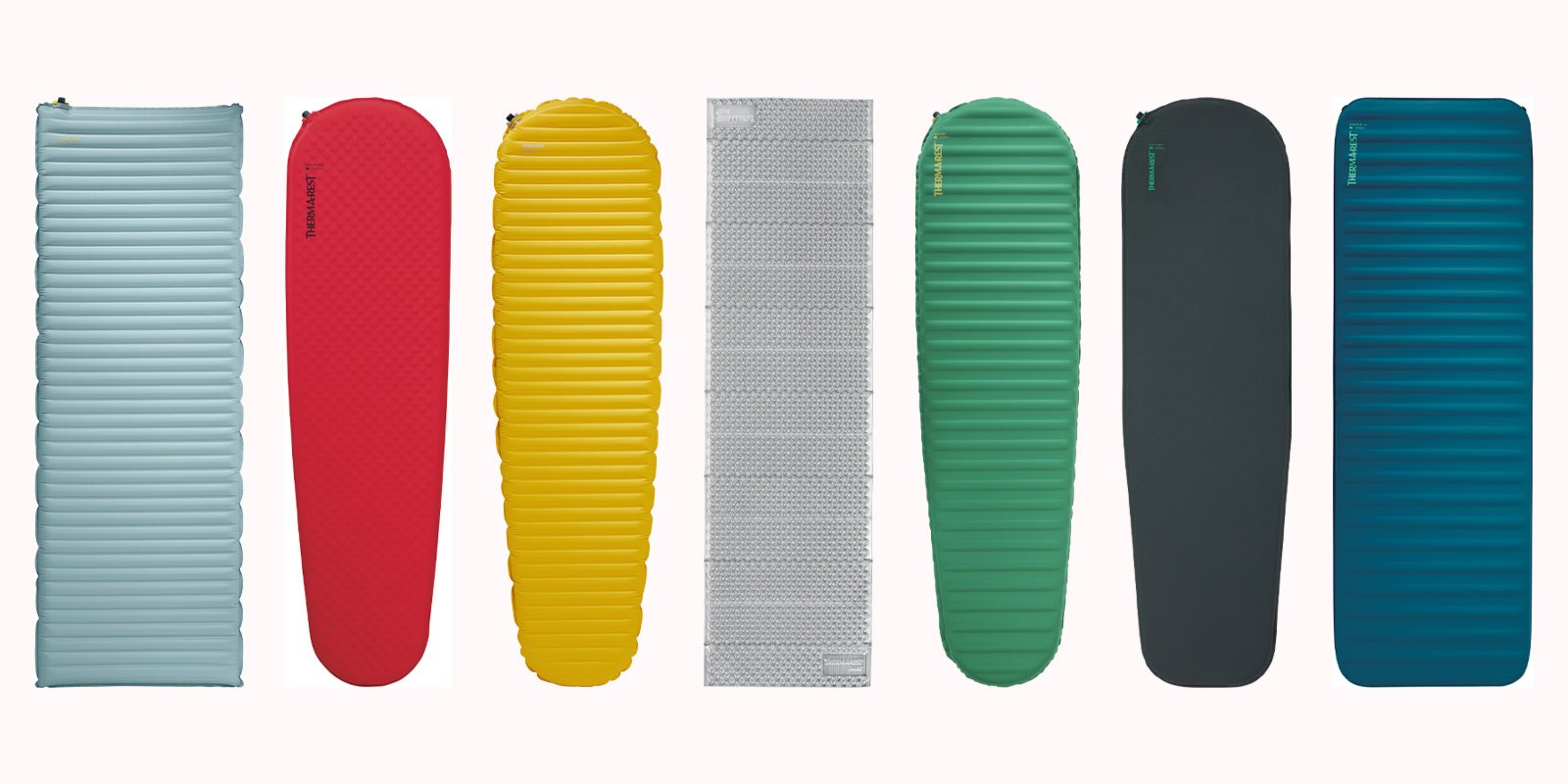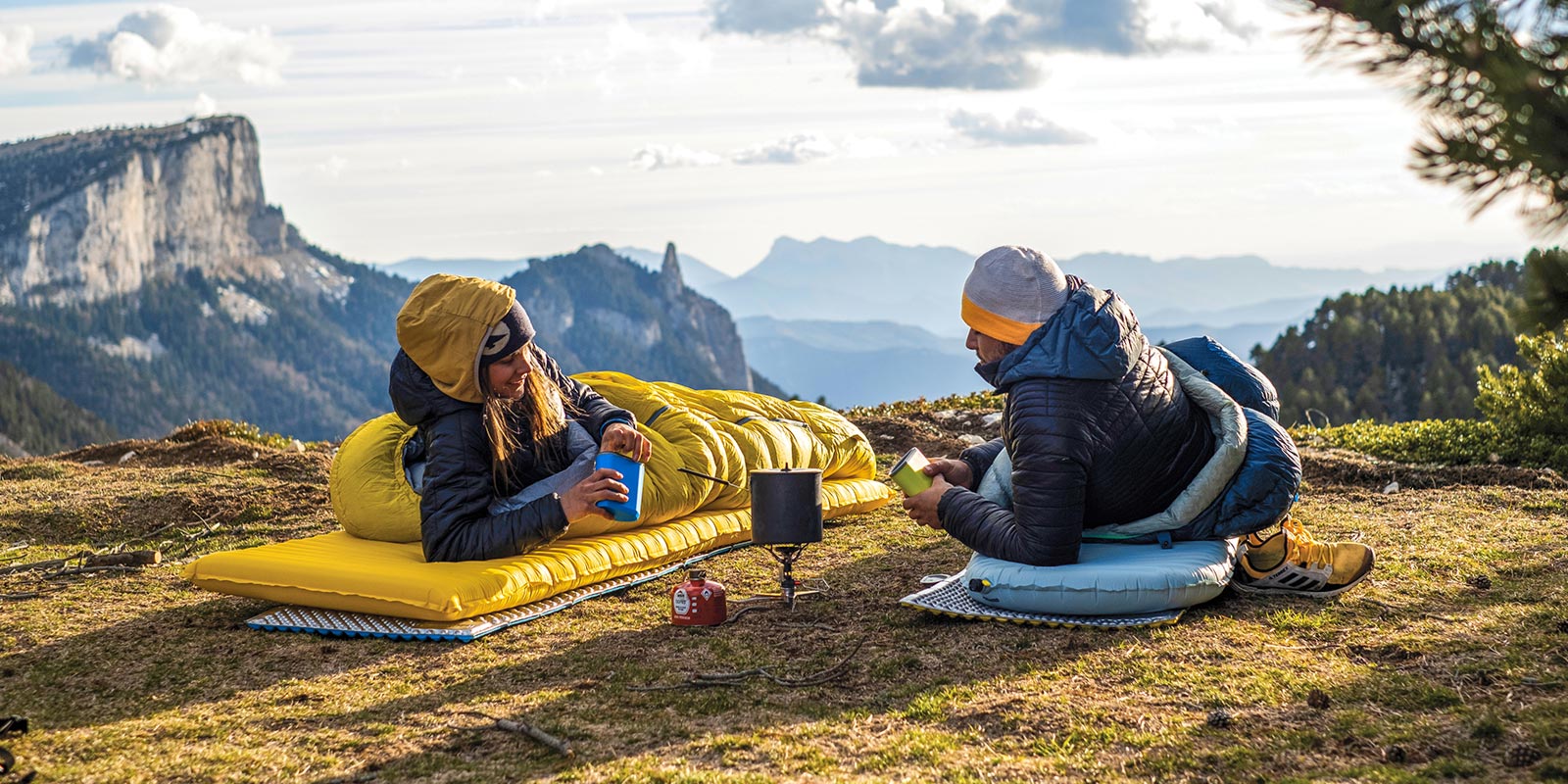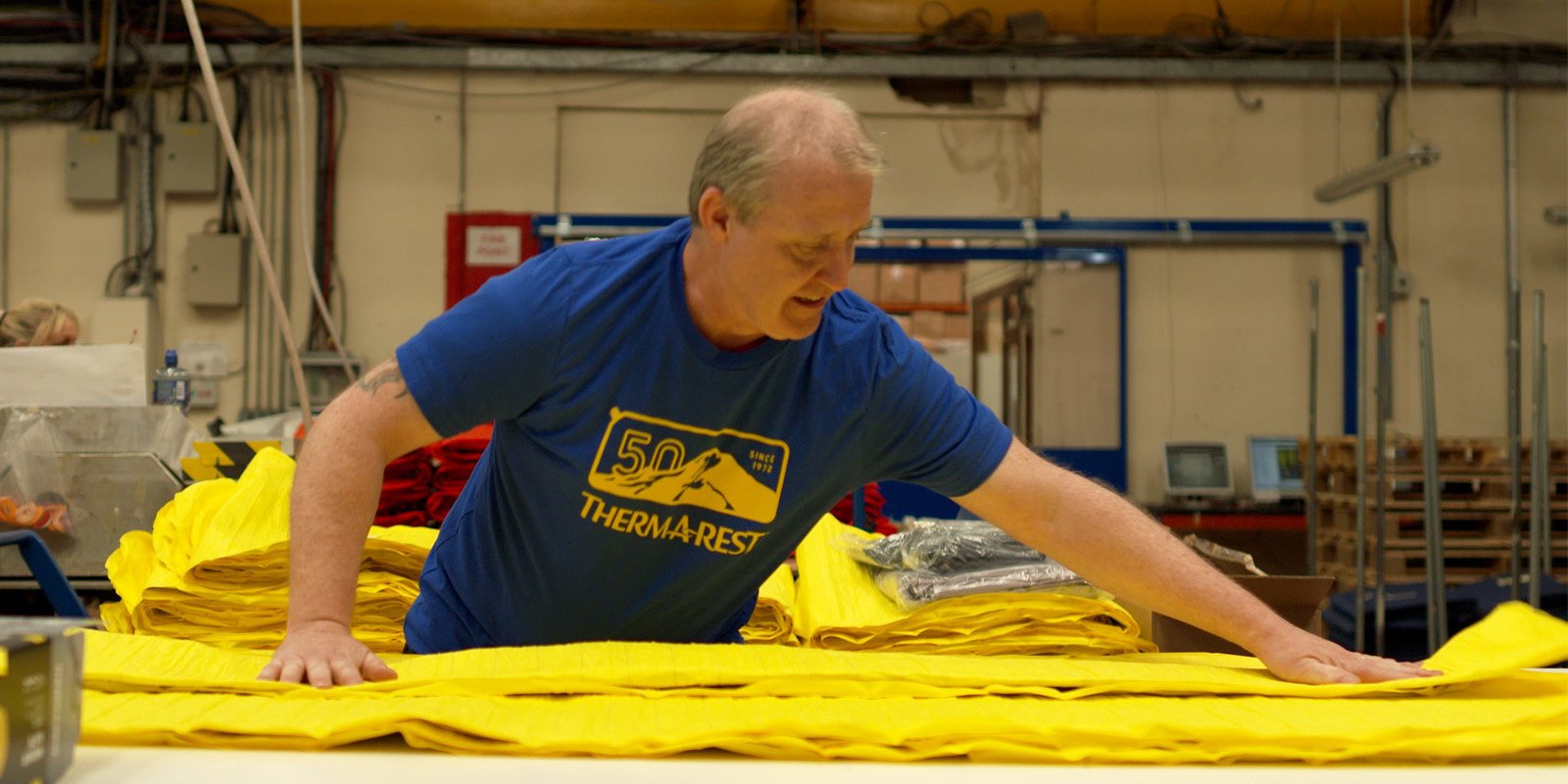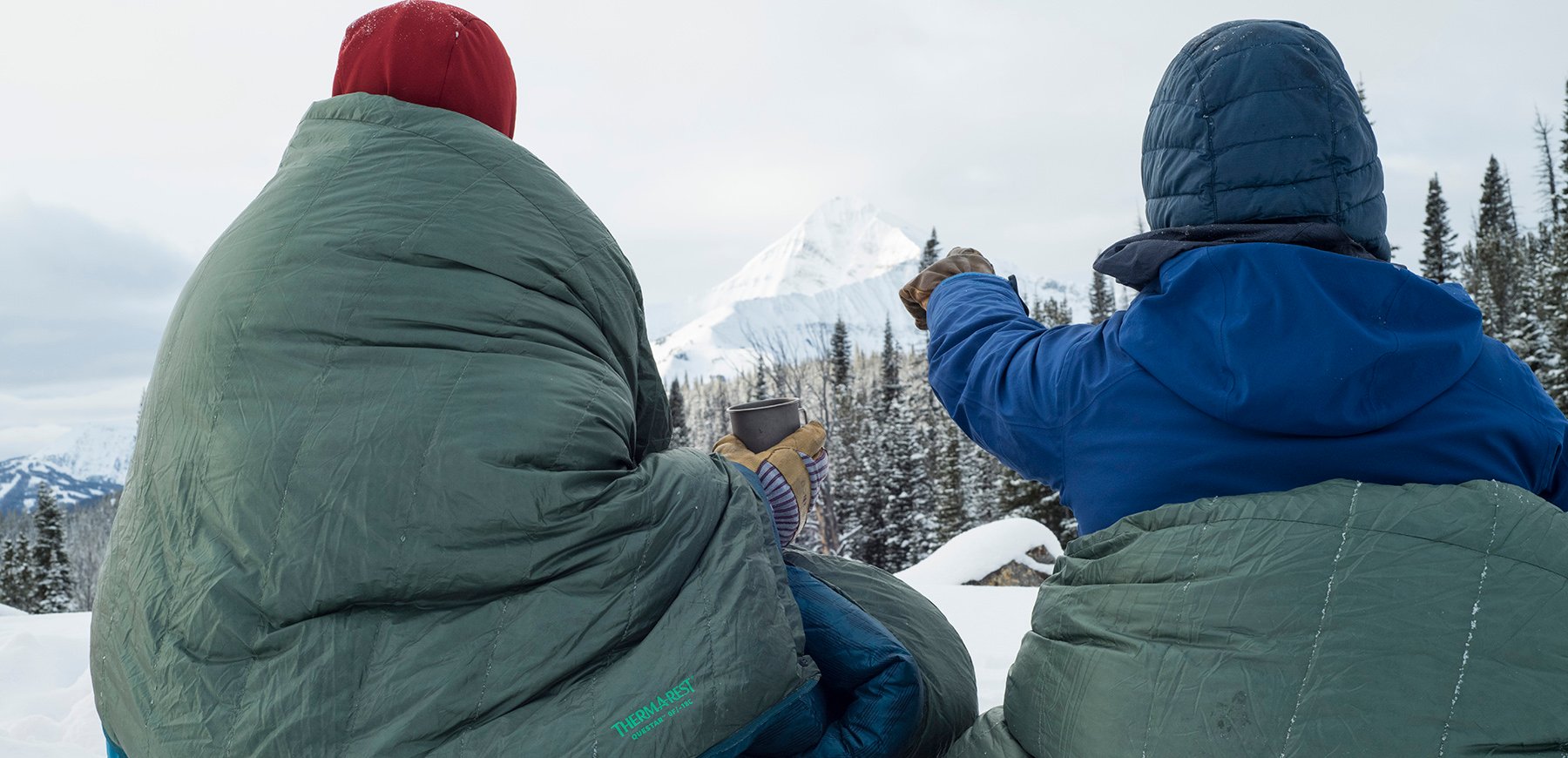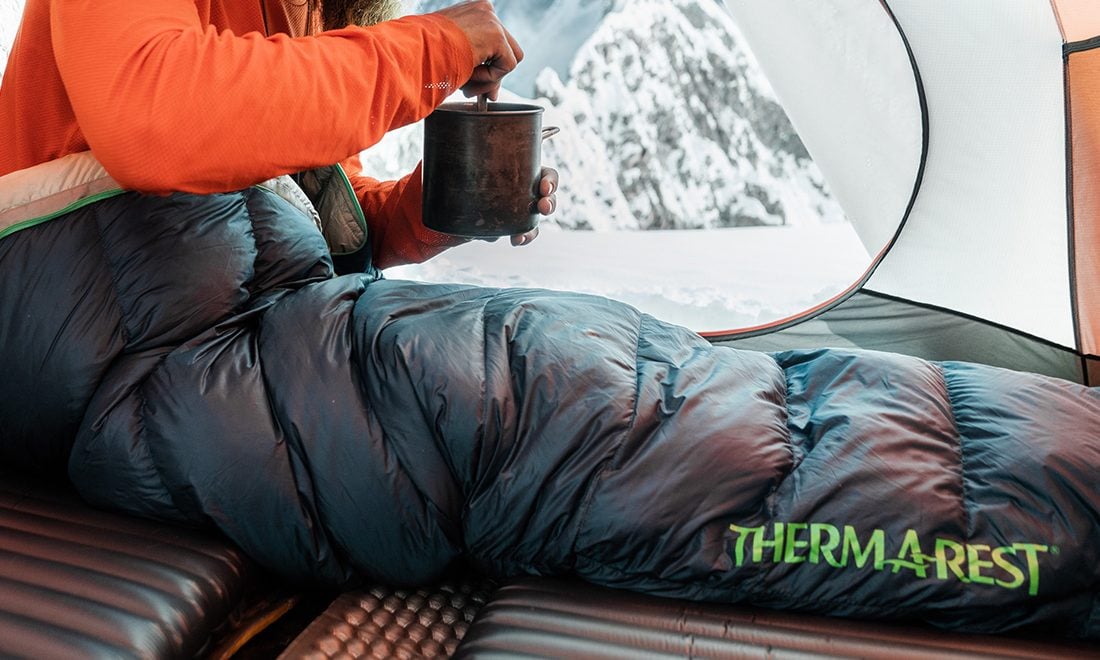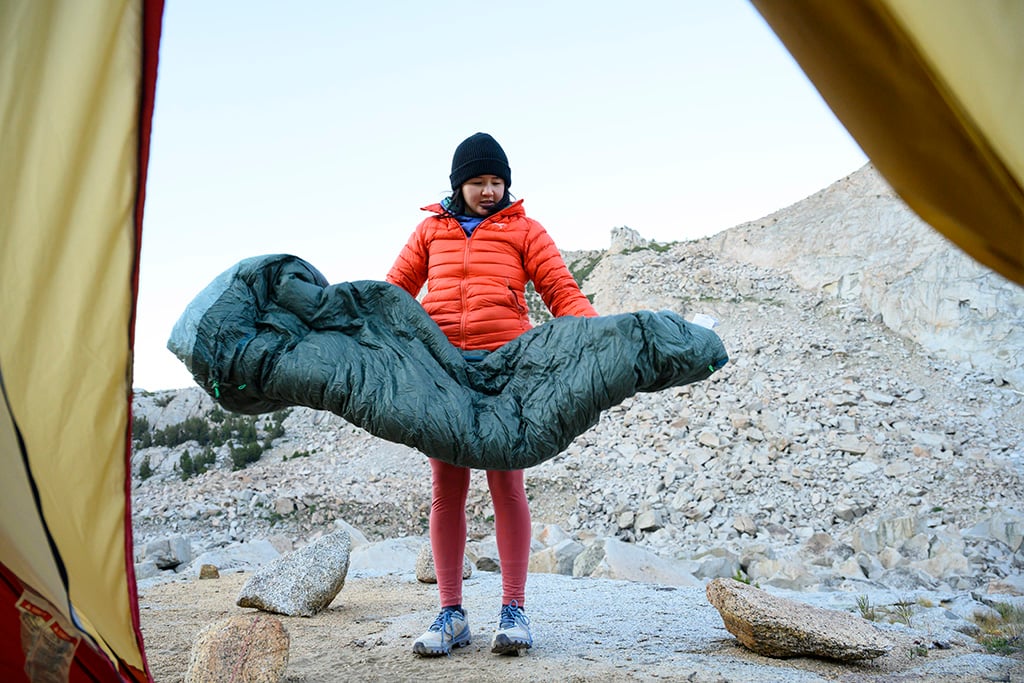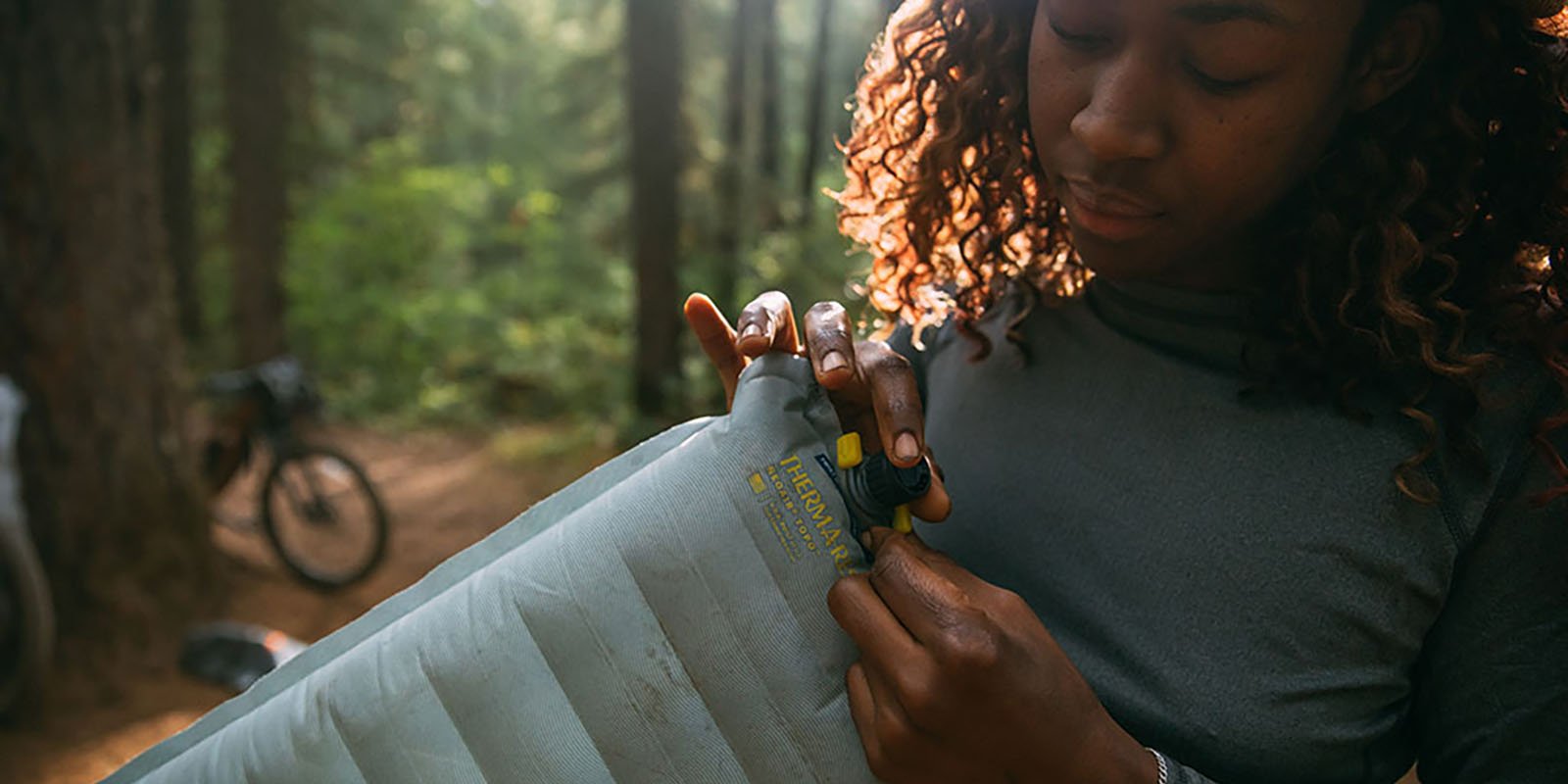Here at Therm-a-Rest, we are a bit obsessed with sleep systems, we hoot and holler about them all the time at HQ. You could call it our mission to design the perfect sleep system, but it’s bigger than that really. It’s more of a quest.
We don’t mean to be dramatic, but we are acutely aware that a comfortable night’s sleep outdoors can be the difference between elation and misery. Here we will walk you through building the right sleep system by showing you how to match its components to individual preferences and conditions.
If you’re more of a visual learner, Click Here to jump to the infographic below!
What is a Sleep System?
A sleep system is the sum of the things you use to achieve a good night’s sleep outdoors. It can be broken down into three component categories: Sleeping Bags, Sleeping Pads and Pillows.
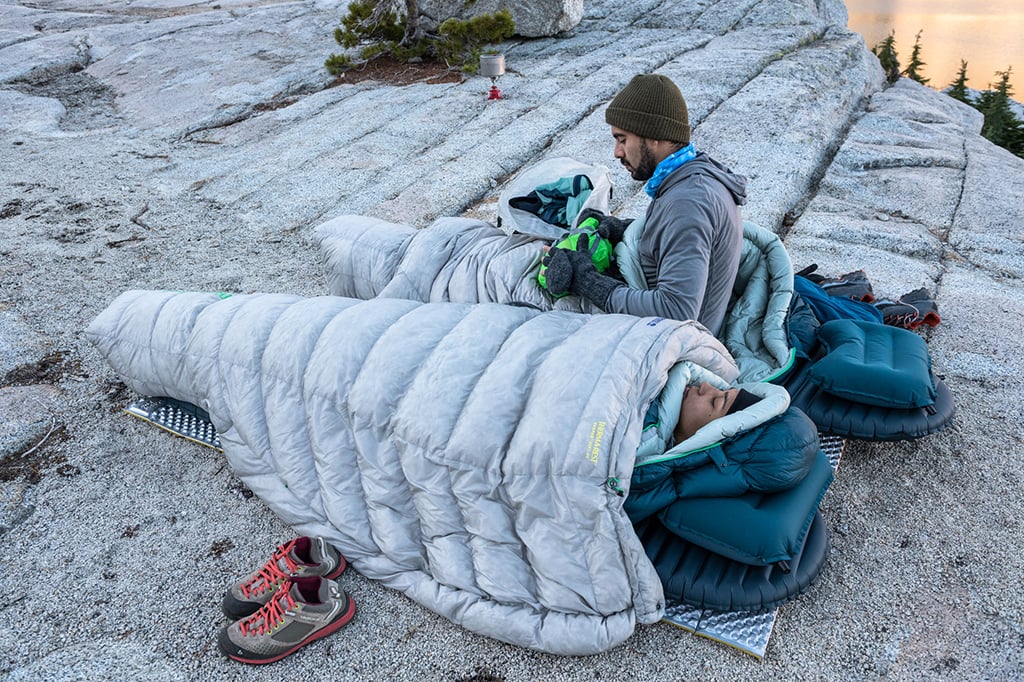
1. Sleeping Bag or Quilt:
A common image related to camping is zipping yourself up in a warm sleeping bag at night and enjoying a plush human cocoon. This is the insulation component and it is the core of your sleep system.
Traditionally, sleeping bags have been the sole choice for the adventurer in terms of insulation, but in the past few years, quilts have risen in popularity due to their lighter weight, unique comfort and targeted design. Both sleeping bags and quilts use either down or synthetic fill to insulate and achieve their EN/ISO temperature ratings. Picking the right fill type, temperature rating and size is how you arrive at a solid choice for component #1.
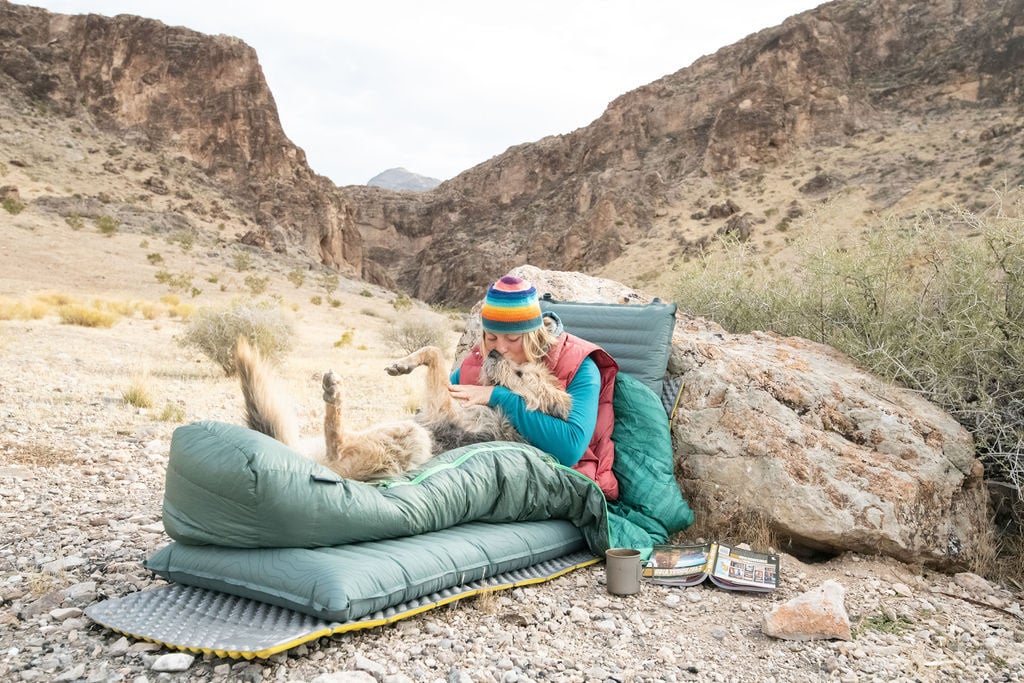
2. Sleeping Pad:
When Therm-a-Rest invented the self-inflating mattress in 1972, it did wonders for sleep systems long before the concept existed. We dramatically improved outdoor sleep by creating a cushioned yet stable surface that provided much more insulation than the thin closed-cell foam pads of the day.
It has been nearly a half-century since the original Therm-a-Rest sleeping pad and let’s just say options have expanded. You can still sleep on closed-cell foam if that’s your style. Our classic Z Lite™ SOL is a popular choice for that. You can also explore the myriad of self-inflating open-cell foam designs we offer. For those looking to limit pack size and weight, our NeoAir® series offers superior warmth-to-weight ratios that pack to a fraction of foam pad’s size.
It is important to take a close look at the R-value of any pad because this measures how much the pad insulates you from the ground; the higher the number the more insulation the pad provides. If finding your perfect sleeping pad feels daunting, we put together a handy sleeping pad finder to help guide you through the process.

3. Pillow:
Not much to explain here. Even if you have limited space in your pack, you can fit the Air Head™ Lite in your pocket on the way out the door. Gone are the days of waking up in the middle of the night with the zipper of your jacket pressed against your head, Therm-a-Rest has you covered with our lineup of backcountry-ready pillows.
4. Bonus Category: Clothing!
When measuring the EN/ISO temperature ratings of sleeping bags in our cold chamber, the sensor-loaded mannequin that tests the bag is wearing clothes. That’s right, it is wearing base layers, which means sleeping bag temperature ratings assume that a real user is wearing clothes. Base layers are critical to staying comfortable all day and all night.
A warm hat and fresh socks stave off frigid temps, while a dry base layer on top and bottom ensures that your sweat doesn’t leave you chilled.
How do Sleep Systems Work?
Being warm, or simply just the right temperature, is one part of thermal efficiency. This part is achieved with a system that provides the right amount of insulation and breathability. The other part is being the right temperature with minimum weight and packed size.
Dialing in your sleep system saves weight with more efficient gear choices. It saves energy by protecting you from harsh conditions to maximize the value of your body heat. It fulfills the number one rule of recreating outdoors: being prepared. The right gear provides the versatility to keep you comfortable in a wide range of conditions.

A Sleep System for Every Season
You may be wondering to yourself what your ideal sleep system is? That depends on your personal preferences and the nature of your adventures. The components of a sleep system should meet the demands of the sleeper and overcome the challenges of the natural environment.
It’s helpful to look at sleep systems as a function of the seasons. They give a general context for what your sleep system needs to accomplish. Stay warm in the winter. Be ventilated and cool in the summer. You get the idea. Below we put together examples of sleep systems built for general seasonal conditions.
Note: In the infographic at the end we show you how you can have one sleep system for all four seasons by having just four pieces of equipment: A closed-cell foam pad, an insulated air pad, a sleeping bag, and a quilt.
Summer Sleep System
A Summer Sleep System for mild summer nights give you the flexibility to pare down your kit and shed weight. A quilt offers customizable breathability and a NeoAir® Topo™ provides plenty of ground insulation and big comfort.
- Sleeping Pad: NeoAir Topo
- Quilt: Corus 32F/0C
- Pillow: Air Head
Fall Sleep System
Dwindling temperatures demand more warmth, it’s time to break out your trusty down sleeping bag. Consider adding a closed-cell foam pad to boost your ground insulation.
- Sleeping Pad Layer 1: Z Lite SOL
- Sleeping Pad Layer 2: NeoAir XLite
- Quilt: Corus 20F/-6C
- Pillow: Stuff Sack Pillow
Winter Sleep System
Winter camping means it’s time to carry more weight to stay warm. When building a Winter Sleep System , layering your sleeping pads is a great place to start. Then, you have two options: 1) If you do a lot of winter camping and prefer a dedicated winter system, use winter-rated sleeping bag or 2) If you only occasionally winter camp and want to add some year-round versatility to your system, just add a quilt over your fall/summer system (depending on temperatures) and you now have all-season versatility just by adding a quilt.
- Sleeping Pad Layer 1: Z Lite™ SOL
- Sleeping Pad Layer 2: NeoAir XTherm
- Dedicated Winter Bag Option: Parsec 0F/-18C
- Quilt/Sleeping Bag Option: Vesper 32F/0C Quilt+ Questar 20F/-6C Sleeping Bag
- Pillow: Air Head Down
Spring Sleep System
Despite the promise of warming temperatures and thawing landscapes, the rain, snow and cold weather linger. You can both be prepared and lighten your load by simply leaving the extra pad at home.
- Sleeping Pad: NeoAir XLite
- Sleeping Bag: Parsec 20F/0C
- Sleeping Quilt: Vesper 32F/0C
- Pillow: Air Head Lite

Finding the Right Sleep System for You
No matter which season, the components of a sleep system should meet the demands of the sleeper and overcome the challenges of the natural environment.
For example, pretend you are a side sleeper in the Pacific Northwest, where it rains a considerable amount. Aim for roomier sleeping bag to accommodate side sleeping. Also, synthetic fill maintains its insulation performance when wet better than down. With the comfort-minded W.A.R.M. fit and water-resistant eraLoft™ synthetic fill, the Saros 20F/-6C is an ideal choice here.
Note: If the forecast is wet and all you have is a down bag, no problem. Just take extra precautions to keep your bag dry. With its incredible warmth-to-weight ratio and our water-resistant Hydrophobic Down on your side, down is still a great choice.
Understanding your own brand of comfort is critical. If you sleep warm, perhaps you can save weight by utilizing a quilt. If you sleep on your side, look for pads that are at least 2 inches thick and sleeping bags that allow you generous range of movement. Those minimizing pack weight on a multi-day backpacking trip will have different priorities, and thus a different sleep system, than those doing a quick and comfy overnighter in similar weather.
We understand that no two sleepers are alike, just as no two trips present the same challenges. The Therm-a-Rest line of sleeping pads and bags has been developed to meet individual for any conditions on earth. Whether you are pushing into the high alpine or crashing in the backyard with your kids, you can find your ideal sleep system at thermarest.com. Leave us a comment about your sleep system and how you could make it better!
Related Posts:
- How to Build Your Car Camping Sleep System
- How to Build a Fall Sleep System
- How To Build Your Winter Sleep System
Infographic

Originally published December 16, 2019

